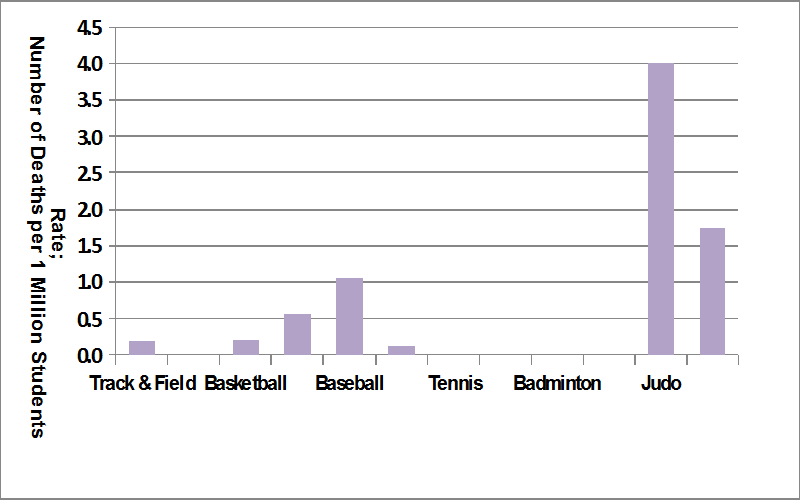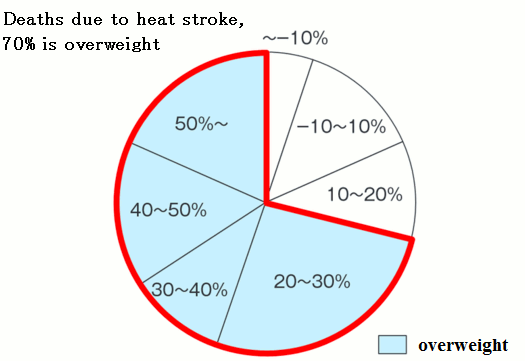120th victim in school supervised judo
High number of fatalities due to heat stroke; 120th victim in school supervised judo
Ryo Uchida, Assistant Professor, Nagoya University, Graduate School of Education and Human Development
■120th victim
A teenager has lost his life practicing judo again.
In the afternoon of August 14, a first year male student of the judo club of a private high school in Yokohama showed symptoms of heat stroke during outdoor practice. The students practiced judo in the morning of the accident, and in the afternoon they ran 2 km outside followed by sprints. The victim collapsed at this point. He died two days later.
In May of this year, a first year female junior high school student in Fukuoka city died after hitting her head after being thrown by “Osotogari” during judo practice at school judo club (119th victim: a fatal judo accident at a judo club in Fukuoka). The 120th victim is the second fatality in school supervised judo this year, increasing the total number of school judo deaths to 120 since 1983.
■High death rate due to heat stroke in judo

Fig.1 Mortality rate due to head trauma in sport club activities in junior high and high schools (1994-2013, Uchida)
In judo, attention has been focused mostly on fatal accidents caused by head trauma. As Fig.1 shows, when we examine the fatal accidents caused by head trauma in sport club activities (Note 1) of junior high and high schools between 1994 and 2013, judo had the highest rate of mortality.
However, as Fig.2 indicates judo has the highest death rate due to heat stroke. With regard to head trauma, the athlete may injure the head in judo because a variety of throws are practiced. However how can we explain the connection between judo and heat stroke?

Fig.2 Mortality rate due to heat stroke in sport club activities in junior high and high schools (1994-2013, Uchida)
■Judo and rugby
Why is the death rate due to heat stroke high in judo? Past cases must be examined in detail, but here I will discuss one factor which could be a possibility.
A clue leading to this factor is that, in rugby, which is not included in the list of sport clubs in fig.1 and fig.2, the mortality rate of heat stroke is high. Per one million students the death rate is 4.0 for judo and 8.3 for rugby. (With regard to head trauma, rugby also shows a high rate; for rugby the death rate is 13.8, the second highest, while for judo it is 19.5.)
■High body fat percentage as a risk factor for heat stroke
A common factor between judo and rugby is that there are many heavy athletes in both sports because of the characteristics of the activities. When a person gains weight and becomes overweight, his/her energy consumption increases even when performing light exercise, and in turn generates more heat. Fat prevents diffusion of energy and body temperature rises, which facilitates heat exhaustion and heat stroke.

The relationship between heat stroke and being overweight (Japan Sports Association, Guidebook for Prevention of Heat Stroke during Sports Activities)
Of the 38 cases of fatal accidents caused by heat stroke under school supervision during the 22 years between 1990 and 2011, 71% is accounted for by students with 20% higher BMI compared to the average (Note 2). Being overweight is a serious risk factor of heat stroke.
The effect of having high body fat percentage on heat stroke is not extensively known. In club activities where large and heavy students tend to gather, for example judo, rugby and sumo, thorough countermeasures against heat stroke are necessary.
Note 1: “Major sport clubs” refers to clubs of junior high and high schools, with more than 30,000 total members in 2004 (midpoint of 1994-2013).
Note 2: Japan Sports Association, 2013, Guidebook for Prevention of Heat Stroke during Sports Activities, p.38









